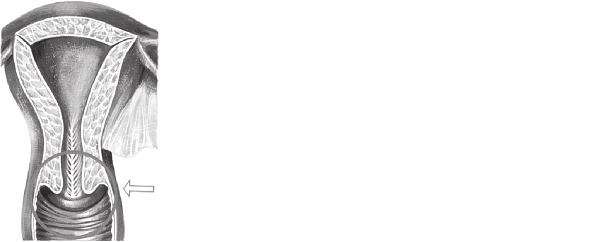FRIDAY, DAY 5
SEXUALITY AND REPRODUCTION
Cervix
In Latin, the word cervix means “neck.” While that description may seem inappropriate for an organ in the female reproductive system, it makes sense when you consider its appearance: This continuation of the lower uterus narrows into a 1.5- to 2-inch tube before it connects to the vagina. Sperm must swim up this channel to fertilize the egg, and menstrual blood must pass through it to leave the body.

Made primarily of connective tissue, the cervix comprises three parts: the external os, the endocervix, and the internal os. The outer opening is the external os, which opens to the vagina and looks like a small, pink doughnut. (After childbirth, it widens and changes shape.) It is the entrance to the endocervix, pierced by the endocervical canal, which runs the length of the cervix. This ends at the internal os, which is the area that opens into the main part of the uterus, the corpus.
The inside of the cervical canal is lined with a moist mucous membrane that has nooks and crannies like an English muffin. Cells within this layer secrete mucus and project cilia, or tiny hairlike extensions, that help move sperm to the uterus. The cervical fluid also contains enzymes that help destroy infection-causing bacteria before they reach the uterus. This mucus becomes extremely thick during pregnancy and acts as a plug that helps seal off the uterus from infection. During labor, the mucus plug is expelled and the cervix widens to about 4 inches in diameter to allow the baby to pass.
ADDITIONAL FACTS
- While the cervix is technically part of the uterus, it has an entirely different function and its own array of possible diseases.
- Most cases of cervical cancer are caused by human papillomavirus, a sexually transmitted disease that affects more than half of sexually active men and women.
- During the female orgasm, the cervix and uterus contract.